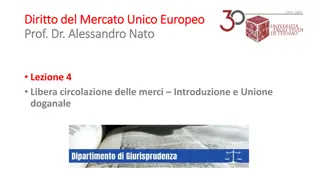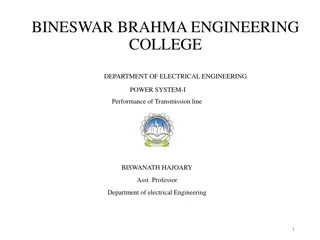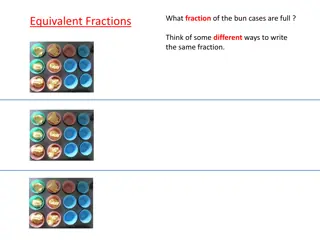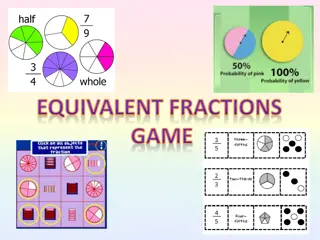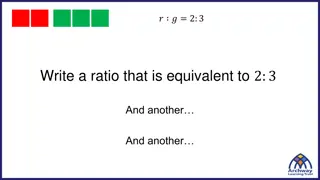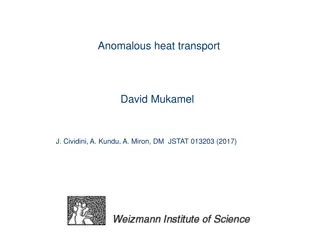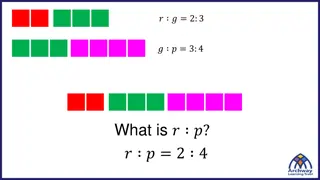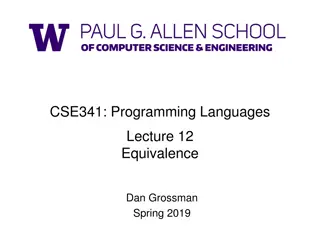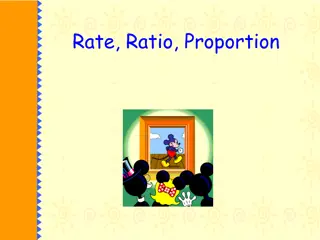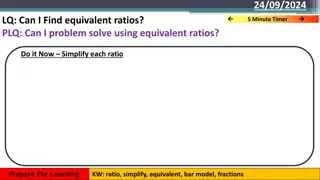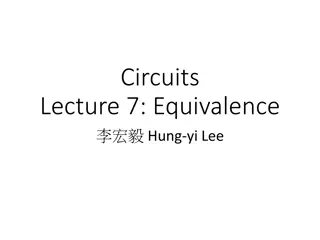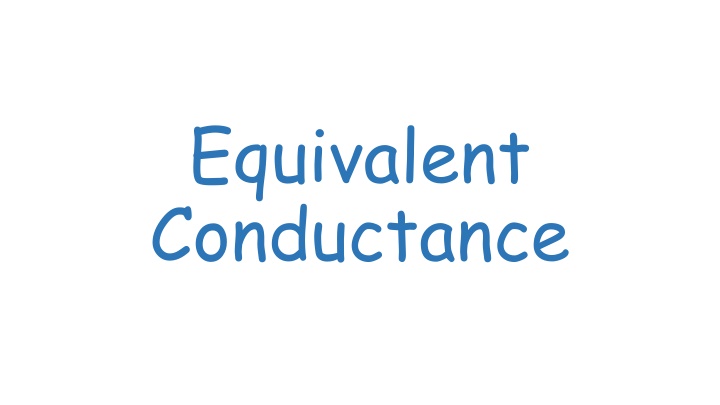
Understanding Equivalent Conductance in Electrolytes
"Equivalent conductance is a key property for characterizing electrolytic conductors, depending on ion concentration. This property is vital in measuring electrolyte conductances, where equivalent conductivity plays a significant role. Learn how equivalent conductance is defined, its importance, and how it is calculated in electrolyte solutions."
Download Presentation

Please find below an Image/Link to download the presentation.
The content on the website is provided AS IS for your information and personal use only. It may not be sold, licensed, or shared on other websites without obtaining consent from the author. If you encounter any issues during the download, it is possible that the publisher has removed the file from their server.
You are allowed to download the files provided on this website for personal or commercial use, subject to the condition that they are used lawfully. All files are the property of their respective owners.
The content on the website is provided AS IS for your information and personal use only. It may not be sold, licensed, or shared on other websites without obtaining consent from the author.
E N D
Presentation Transcript
Equivalent Conductance
It is a property which is suitable for characterising electrolytic conductors. In such cases, the value of conductance also depends upon the concentration of the electrolyte or the number of ions present in solution.
One mole of KCl ionises to give one mole of K+ions and one mole of Cl-ions. The total charge carried by these ions is equal to two faradays.
On the other hand, one mole of Pot. sulphate ionises to give two moles of K+ions and one mole of SO-2ions. The total charge carried by these ions is equal to 4 faradays. 4
Clearly, two solutions, (i) one containing one mole of KCl and other containing half mole of Pot. sulphate will give comparable results.
Hence, for measuring conductances of electrolytes, a more significant term is commonly used, which is equivalent conductivity.
Equivalent conductance This is defined as the conductance of a volume of electrolyte solution containing one equivalent weight of the electrolyte enclosed between two parallel electrodes of cross sectional area of 1 sq.cm and are separated by a distance of 1 cm.
Equivalent conductance is defined as the conducting power of all the ions produced by one gram equivalent of an electrolyte in a given solution. It is denoted by
Equivalent conductance = Specific conductance V where V is the volume in cc containing one gram equivalent of the electrolyte.
Thus, = k x V Eq. conductance ( ) is expressed as ohm-1cm2/gm eq.
Variation of equivalent conductance with dilution
Equivalent conductance of any electrolyte solution (strong or weak) increases with dilution and reaches a limiting value at infinite dilution or zero concentration.
This is known as equivalent conductance at infinite dilution. The graphs drawn for different electrolytes are shown in the figure.
1 2 3
The linear graphs 1, 2 correspond to strong electrolytes (KCl, NaCl, HCl, H2SO4Etc.) '1' denotes strong electrolyte '2' denotes moderately strong electrolyte '3' denote weak electrolyte (CH3COOH, NH4OH etc ., ).
The increase in equivalent conductance with dilution was earlier attributed to the increase in the number of ions due to the increased ionization of the electrolytes with dilution.
In any electrolytic solution, the conductance of the solution is due to movement of the ions present in it. The ions are formed by the dissociation of the electrolyte.
These ions migrate towards the oppositely charged electrodes when an electric potential is applied to the solution. But the ions may or may not move with same speed.
Thus this movement of ions towards oppositely charged electrodes under the influence of an electric applied potential is called the Migration of Ions.
The speeds of migration of ions vary with the applied potential. This speed under applied potential is called Mobility of the ion (u+, u-)
Ionic mobility This is defined as the distance travelled by an ion per second under a potential gradient of 1 volt / cm. Ionic mobility = Speed of the ion / electric field strength Units .V-1cm1s-1
Ionic mobilities are proportional to ionic conductances. Ionic conductance at infinite dilution depends upon the charge and the speed of the ion.

